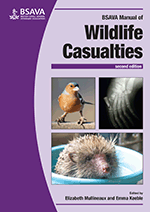
Full text loading...

Alongside a growing general interest in wildlife health there has been an encouraging growth of input by professional veterinary bodies into monitoring zoonoses, infectious diseases and new pathogens and environmental pollutants. This chapter explores the methods and challenges of clinical pathology of wildlife, including: sampling methods, diagnostic tests, interpretation and record-keeping, and post-mortem examinations.
Clinical pathology, post-mortem examinations and disease surveillance, Page 1 of 1
< Previous page | Next page > /docserver/preview/fulltext/10.22233/9781910443316/9781910443316.10-1.gif

Full text loading...




